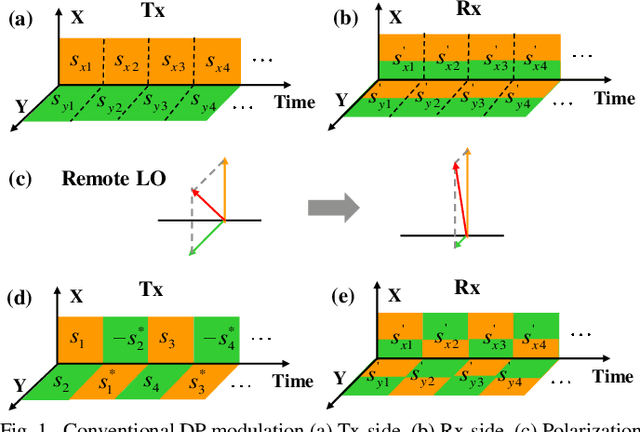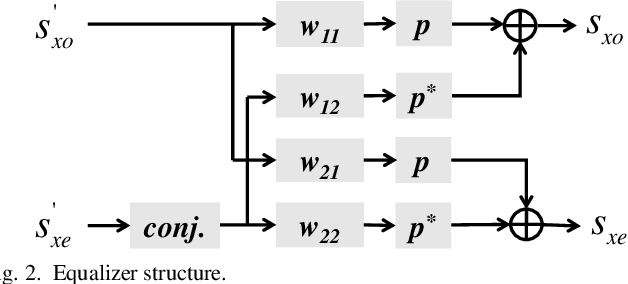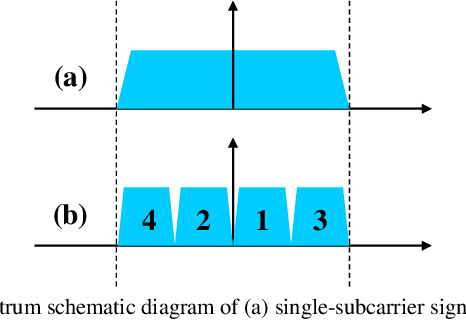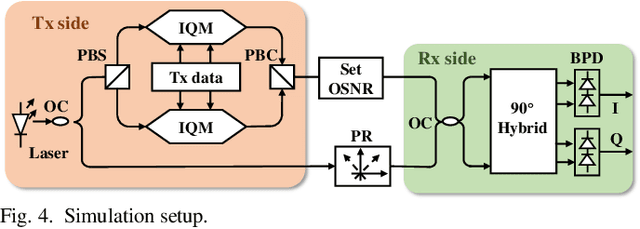Chao Lu
Complementary Learning System Empowers Online Continual Learning of Vehicle Motion Forecasting in Smart Cities
Aug 27, 2025Abstract:Artificial intelligence underpins most smart city services, yet deep neural network (DNN) that forecasts vehicle motion still struggle with catastrophic forgetting, the loss of earlier knowledge when models are updated. Conventional fixes enlarge the training set or replay past data, but these strategies incur high data collection costs, sample inefficiently and fail to balance long- and short-term experience, leaving them short of human-like continual learning. Here we introduce Dual-LS, a task-free, online continual learning paradigm for DNN-based motion forecasting that is inspired by the complementary learning system of the human brain. Dual-LS pairs two synergistic memory rehearsal replay mechanisms to accelerate experience retrieval while dynamically coordinating long-term and short-term knowledge representations. Tests on naturalistic data spanning three countries, over 772,000 vehicles and cumulative testing mileage of 11,187 km show that Dual-LS mitigates catastrophic forgetting by up to 74.31\% and reduces computational resource demand by up to 94.02\%, markedly boosting predictive stability in vehicle motion forecasting without inflating data requirements. Meanwhile, it endows DNN-based vehicle motion forecasting with computation efficient and human-like continual learning adaptability fit for smart cities.
Escaping Stability-Plasticity Dilemma in Online Continual Learning for Motion Forecasting via Synergetic Memory Rehearsal
Aug 27, 2025Abstract:Deep neural networks (DNN) have achieved remarkable success in motion forecasting. However, most DNN-based methods suffer from catastrophic forgetting and fail to maintain their performance in previously learned scenarios after adapting to new data. Recent continual learning (CL) studies aim to mitigate this phenomenon by enhancing memory stability of DNN, i.e., the ability to retain learned knowledge. Yet, excessive emphasis on the memory stability often impairs learning plasticity, i.e., the capacity of DNN to acquire new information effectively. To address such stability-plasticity dilemma, this study proposes a novel CL method, synergetic memory rehearsal (SyReM), for DNN-based motion forecasting. SyReM maintains a compact memory buffer to represent learned knowledge. To ensure memory stability, it employs an inequality constraint that limits increments in the average loss over the memory buffer. Synergistically, a selective memory rehearsal mechanism is designed to enhance learning plasticity by selecting samples from the memory buffer that are most similar to recently observed data. This selection is based on an online-measured cosine similarity of loss gradients, ensuring targeted memory rehearsal. Since replayed samples originate from learned scenarios, this memory rehearsal mechanism avoids compromising memory stability. We validate SyReM under an online CL paradigm where training samples from diverse scenarios arrive as a one-pass stream. Experiments on 11 naturalistic driving datasets from INTERACTION demonstrate that, compared to non-CL and CL baselines, SyReM significantly mitigates catastrophic forgetting in past scenarios while improving forecasting accuracy in new ones. The implementation is publicly available at https://github.com/BIT-Jack/SyReM.
MultiEditor: Controllable Multimodal Object Editing for Driving Scenarios Using 3D Gaussian Splatting Priors
Jul 30, 2025Abstract:Autonomous driving systems rely heavily on multimodal perception data to understand complex environments. However, the long-tailed distribution of real-world data hinders generalization, especially for rare but safety-critical vehicle categories. To address this challenge, we propose MultiEditor, a dual-branch latent diffusion framework designed to edit images and LiDAR point clouds in driving scenarios jointly. At the core of our approach is introducing 3D Gaussian Splatting (3DGS) as a structural and appearance prior for target objects. Leveraging this prior, we design a multi-level appearance control mechanism--comprising pixel-level pasting, semantic-level guidance, and multi-branch refinement--to achieve high-fidelity reconstruction across modalities. We further propose a depth-guided deformable cross-modality condition module that adaptively enables mutual guidance between modalities using 3DGS-rendered depth, significantly enhancing cross-modality consistency. Extensive experiments demonstrate that MultiEditor achieves superior performance in visual and geometric fidelity, editing controllability, and cross-modality consistency. Furthermore, generating rare-category vehicle data with MultiEditor substantially enhances the detection accuracy of perception models on underrepresented classes.
The Fourth Monocular Depth Estimation Challenge
Apr 24, 2025Abstract:This paper presents the results of the fourth edition of the Monocular Depth Estimation Challenge (MDEC), which focuses on zero-shot generalization to the SYNS-Patches benchmark, a dataset featuring challenging environments in both natural and indoor settings. In this edition, we revised the evaluation protocol to use least-squares alignment with two degrees of freedom to support disparity and affine-invariant predictions. We also revised the baselines and included popular off-the-shelf methods: Depth Anything v2 and Marigold. The challenge received a total of 24 submissions that outperformed the baselines on the test set; 10 of these included a report describing their approach, with most leading methods relying on affine-invariant predictions. The challenge winners improved the 3D F-Score over the previous edition's best result, raising it from 22.58% to 23.05%.
Cross-cultural Deployment of Autonomous Vehicles Using Data-light Inverse Reinforcement Learning
Apr 15, 2025Abstract:More than the adherence to specific traffic regulations, driving culture touches upon a more implicit part - an informal, conventional, collective behavioral pattern followed by drivers - that varies across countries, regions, and even cities. Such cultural divergence has become one of the biggest challenges in deploying autonomous vehicles (AVs) across diverse regions today. The current emergence of data-driven methods has shown a potential solution to enable culture-compatible driving through learning from data, but what if some underdeveloped regions cannot provide sufficient local data to inform driving culture? This issue is particularly significant for a broader global AV market. Here, we propose a cross-cultural deployment scheme for AVs, called data-light inverse reinforcement learning, designed to re-calibrate culture-specific AVs and assimilate them into other cultures. First, we report the divergence in driving cultures through a comprehensive comparative analysis of naturalistic driving datasets on highways from three countries: Germany, China, and the USA. Then, we demonstrate the effectiveness of our scheme by testing the expeditious cross-cultural deployment across these three countries, with cumulative testing mileage of over 56084 km. The performance is particularly advantageous when cross-cultural deployment is carried out without affluent local data. Results show that we can reduce the dependence on local data by a margin of 98.67% at best. This study is expected to bring a broader, fairer AV global market, particularly in those regions that lack enough local data to develop culture-compatible AVs.
Targetless Intrinsics and Extrinsic Calibration of Multiple LiDARs and Cameras with IMU using Continuous-Time Estimation
Jan 06, 2025



Abstract:Accurate spatiotemporal calibration is a prerequisite for multisensor fusion. However, sensors are typically asynchronous, and there is no overlap between the fields of view of cameras and LiDARs, posing challenges for intrinsic and extrinsic parameter calibration. To address this, we propose a calibration pipeline based on continuous-time and bundle adjustment (BA) capable of simultaneous intrinsic and extrinsic calibration (6 DOF transformation and time offset). We do not require overlapping fields of view or any calibration board. Firstly, we establish data associations between cameras using Structure from Motion (SFM) and perform self-calibration of camera intrinsics. Then, we establish data associations between LiDARs through adaptive voxel map construction, optimizing for extrinsic calibration within the map. Finally, by matching features between the intensity projection of LiDAR maps and camera images, we conduct joint optimization for intrinsic and extrinsic parameters. This pipeline functions in texture-rich structured environments, allowing simultaneous calibration of any number of cameras and LiDARs without the need for intricate sensor synchronization triggers. Experimental results demonstrate our method's ability to fulfill co-visibility and motion constraints between sensors without accumulating errors.
Adaptive Knowledge-based Multi-Objective Evolutionary Algorithm for Hybrid Flow Shop Scheduling Problems with Multiple Parallel Batch Processing Stages
Sep 27, 2024



Abstract:Parallel batch processing machines have extensive applications in the semiconductor manufacturing process. However, the problem models in previous studies regard parallel batch processing as a fixed processing stage in the machining process. This study generalizes the problem model, in which users can arbitrarily set certain stages as parallel batch processing stages according to their needs. A Hybrid Flow Shop Scheduling Problem with Parallel Batch Processing Machines (PBHFSP) is solved in this paper. Furthermore, an Adaptive Knowledge-based Multi-Objective Evolutionary Algorithm (AMOEA/D) is designed to simultaneously optimize both makespan and Total Energy Consumption (TEC). Firstly, a hybrid initialization strategy with heuristic rules based on knowledge of PBHFSP is proposed to generate promising solutions. Secondly, the disjunctive graph model has been established based on the knowledge to find the critical-path of PBHFS. Then, a critical-path based neighborhood search is proposed to enhance the exploitation ability of AMOEA/D. Moreover, the search time is adaptively adjusted based on learning experience from Q-learning and Decay Law. Afterward, to enhance the exploration capability of the algorithm, AMOEA/D designs an improved population updating strategy with a weight vector updating strategy. These strategies rematch individuals with weight vectors, thereby maintaining the diversity of the population. Finally, the proposed algorithm is compared with state-of-the-art algorithms. The experimental results show that the AMOEA/D is superior to the comparison algorithms in solving the PBHFSP.
A History-Guided Regional Partitioning Evolutionary Optimization for Solving the Flexible Job Shop Problem with Limited Multi-load Automated Guided Vehicles
Sep 27, 2024Abstract:In a flexible job shop environment, using Automated Guided Vehicles (AGVs) to transport jobs and process materials is an important way to promote the intelligence of the workshop. Compared with single-load AGVs, multi-load AGVs can improve AGV utilization, reduce path conflicts, etc. Therefore, this study proposes a history-guided regional partitioning algorithm (HRPEO) for the flexible job shop scheduling problem with limited multi-load AGVs (FJSPMA). First, the encoding and decoding rules are designed according to the characteristics of multi-load AGVs, and then the initialization rule based on the branch and bound method is used to generate the initial population. Second, to prevent the algorithm from falling into a local optimum, the algorithm adopts a regional partitioning strategy. This strategy divides the solution space into multiple regions and measures the potential of the regions. After that, cluster the regions into multiple clusters in each iteration, and selects individuals for evolutionary search based on the set of clusters. Third, a local search strategy is designed to improve the exploitation ability of the algorithm, which uses a greedy approach to optimize machines selection and transportation sequence according to the characteristics of FJSPMA. Finally, a large number of experiments are carried out on the benchmarks to test the performance of the algorithm. Compared with multiple advanced algorithms, the results show that the HRPEO has a better advantage in solving FJSPMA.
Simplified Self-homodyne Coherent System Based on Alamouti Coding and Digital Subcarrier Multiplexing
Mar 18, 2024



Abstract:Coherent technology inherent with more availabledegrees of freedom is deemed a competitive solution for nextgeneration ultra-high-speed short-reach optical interconnects.However, the fatal barriers to implementing the conventiona.coherent system in short-reach optical interconnect are the costfootprint, and power consumption. Self-homodyne coherentsystem exhibits its potential to reduce the power consumption ofthe receiver-side digital signal processing (Rx-DSP) by deliveringthe local oscillator (LO) from the transmitter. However, anautomatic polarization controller (APC) is inevitable in the remoteLO link to avoid polarization fading, resulting in additional costsTo address the polarization fading issue, a simplified self.homodyne coherent system is proposed enabled by Alamouticoding in this paper. Benefiting from the Alamouti coding betweentwo polarizations, a polarization-insensitive receiver onlyincluding a 3dB coupler, a 90o Hybrid, and two balancedphotodiodes (BPDs)is sufficient for reception. Meanwhile, theAPC in the LO link is needless, simplifying the receiver structuresignificantly. Besides, the digital subcarrier multiplexing (DSCM)technique is also adopted to relax the computational complexity ofthe chromatic dispersion compensation (CDC), which is one of thedominant power consumption modules in Rx-DSP. Thetransmission performance of 50Gbaud 4-subcarrier 16/32OAM(4SC-16/320AM) DSCM signal based on the proposed simplifiedself-homodyne coherent system is investigated experimentallyThe results show that the bit-error-ratio(BER) performancedegradation caused by CD can be solved by increasing 4 taps inthe equalizer for 80km single mode fiber(SMF)transmissionwithout individual CDC, which operates in a low-complexitymanner.
Compressed domain vibration detection and classification for distributed acoustic sensing
Dec 27, 2022



Abstract:Distributed acoustic sensing (DAS) is a novel enabling technology that can turn existing fibre optic networks to distributed acoustic sensors. However, it faces the challenges of transmitting, storing, and processing massive streams of data which are orders of magnitude larger than that collected from point sensors. The gap between intensive data generated by DAS and modern computing system with limited reading/writing speed and storage capacity imposes restrictions on many applications. Compressive sensing (CS) is a revolutionary signal acquisition method that allows a signal to be acquired and reconstructed with significantly fewer samples than that required by Nyquist-Shannon theorem. Though the data size is greatly reduced in the sampling stage, the reconstruction of the compressed data is however time and computation consuming. To address this challenge, we propose to map the feature extractor from Nyquist-domain to compressed-domain and therefore vibration detection and classification can be directly implemented in compressed-domain. The measured results show that our framework can be used to reduce the transmitted data size by 70% while achieves 99.4% true positive rate (TPR) and 0.04% false positive rate (TPR) along 5 km sensing fibre and 95.05% classification accuracy on a 5-class classification task.
 Add to Chrome
Add to Chrome Add to Firefox
Add to Firefox Add to Edge
Add to Edge